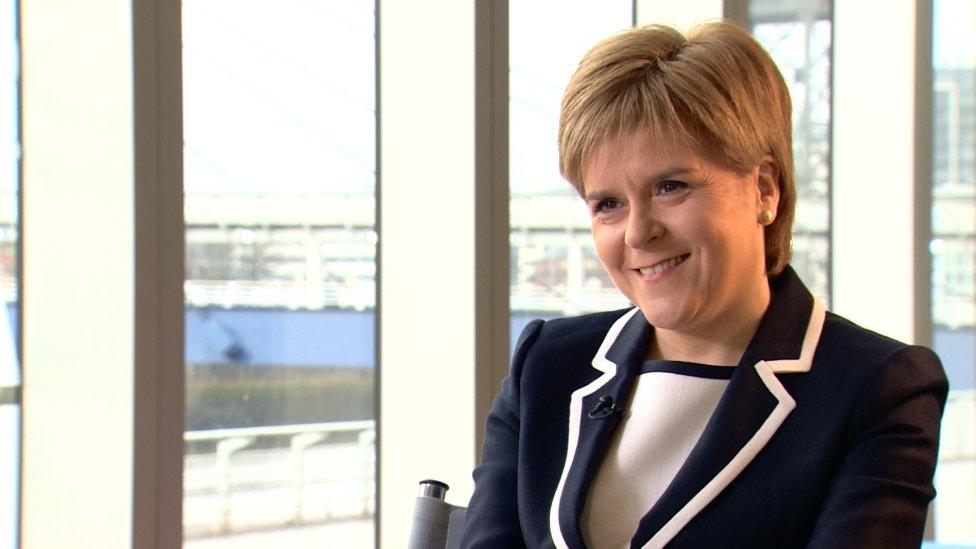Holyrood 2016: How could the SNP's tax plan raise an extra £2bn?
- Published
The Holyrood election campaign is under way and the policy announcements from Scotland's main political parties are starting to flow.
But do they make sense to you and where do the figures used come from?
Here, I've looked at the SNP's claim that its tax plans would raise an extra £2bn over the next parliament.
Is there an election issue you think needs more explanation? Send in your queries to newsonlinescotland@bbc.co.uk marking them "election questions".

How might an extra £2bn be possible?
Most of the potential revenue is from a change to the threshold at which higher rate payers would start to pay tax, already rising to £43,000 with the start of the new financial year.
The SNP said it would not implement the full increase being planned by George Osborne for the rest of the UK, but restricting the increase to inflation.
The Chancellor has started raising that threshold faster than inflation, and the Conservative manifesto last year set out to raise it to £50,000.
This is a tax cut, because each pound earned between the current and future threshold for 40% will be taxed at only half the rate (20%) if it falls into the basic rate band.
So, where does Ms Sturgeon find £1.2bn extra as she claims, from a tax cut. It involves part of the Fiscal Framework agreed with the Treasury in London.
In future, if Westminster policy means an impact on Scottish revenue, Westminster has to compensate Holyrood for that.
By cutting tax for higher earners, but not doing so for Scotland, George Osborne is reckoned by Scottish government economists, external to owe £120m in 2016-17, rising to £350m in 2020-21. Add up the years, and you get £1.25bn.

And what about the rest of the £2bn claimed by the SNP?
Changes to local taxes
How much more could be raised?
3%
Rate at which councils can up tax
-
£350m If all 32 used 3% rise
-
£500m Changes to bands
-
£650m Business tax rises
The party is proposing that councils should be allowed to increase Council Tax rates by 3%.
If all 32 local authorities do so, that would bring in an extra £350m if you add up the figures over five years (the annual revenue is now just under £2bn, so the first year would bring in an extra £60m).
In addition to that, a re-organisation of council tax bands is expected to draw another £500m from owners of more valuable homes - again, in tranches increasing over the five years, and totalling that half billion.
And big business faces a tax hike of £650m from non-domestic rates.
The total of that comes to £2.7bn. But as some of it depends on council decisions, and perhaps because the SNP doesn't want to sound too keen on high tax, it has been rounded down to "two billion".

How do rivals of the SNP see things?
Scotland's 40p tax payers
372,000
Approximate total number
10%
Working population
-
£190m Value of 40p tax cut plan
-
14,000 Workers removed if cut adopted in Scotland
Unsurprisingly, opponents see things differently to the SNP.
One aspect of the arithmetic highlighted by rivals of the SNP is that higher rate tax-payers will be paying more tax - up to £323 more - relative to people with the same taxable income in the rUK.
So one interpretation of this is that Holyrood gains from compensation through an adjustment to its block grant from Westminster - though that calculation is open to dispute between parties in the campaign, and between governments from next year.
The other way of looking at this is how much Scottish taxpayers have to fork out. And under SNP plans, higher earners would be handing more money to Holyrood, so you can choose to see this as a (relative) tax raid on higher earners.
- Published29 March 2016
